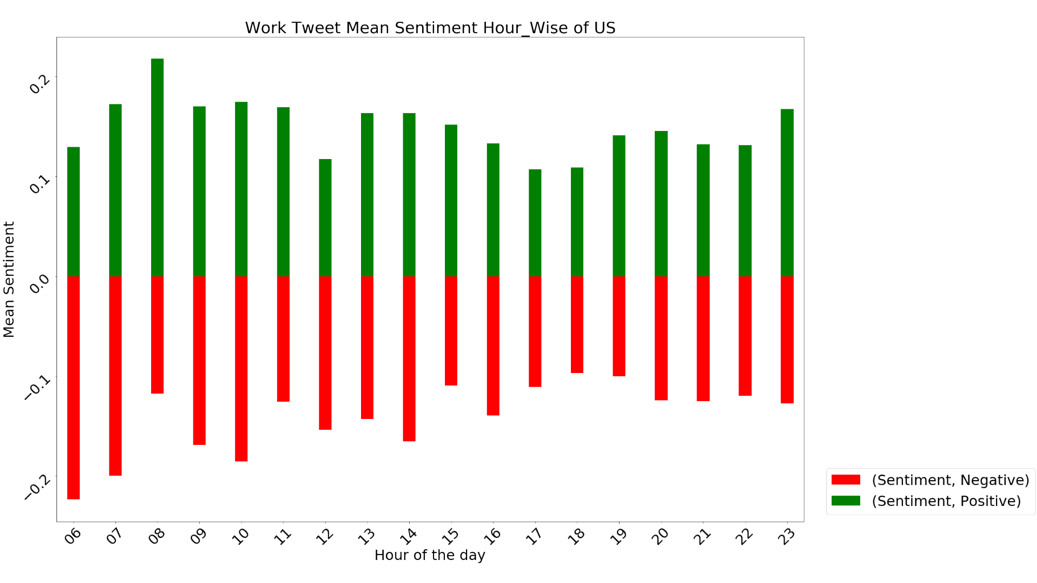California Management Review
California Management Review is a premier academic management journal published at UC Berkeley
by Patrick Tinguely, Yash Raj Shrestha, and Georg Von Krogh

The COVID-19 pandemic is causing a massive disruption in the labor forces across the world. Workers at all levels and in virtually all professions experience layoffs, heavy over-time, obligation to work from home, new safety measures, and dramatically worsening working conditions. A large part of the labor force’s emotional distress results directly from governmental policies. To minimize the risk to public health, governments impose social distancing measures by banning large gatherings, closing national borders, moving schooling from public space to homes, shutting down non-essential businesses, or enforcing home quarantine. Clearly, these policies have not only an impact on running a business, but also more generally, on the motivation and wellbeing of the workforce.
While business leaders are expected to understand their employees and preemptively make HR decisions, labor force reaction and sentiment often appears as a massive, morphing, and ambiguous social phenomenon. In times of crisis, business leaders should support employees in coping with resulting uncertainty at work. Crisis leadership literature recommends business leaders to observe the on-the-ground realities and frequently pivot as to align their strategy with the latest situation. Monitoring and gaining insights on the real-time reaction of the labor force to governmental measures is vital to keep the business afloat and effectively plan for an uncertain future.
In this paper our aim is to help business leaders complement their internal assessment of workforce sentiment through monitoring of collective sentiment in social media. This is important because employees are embedded in the labor force and thus prone to emotional contagion in times of crisis. Our findings indicate that business leaders should address ongoing fear, mind COVID-19 lagged effect, benefit from “optimistic Wednesdays”, and sustain the “good mood breakfast effect”.
While company policies may encourage employees to work from home and let them enjoy more autonomy, side-effects may be social isolation or increasing worries about job security and health. It goes without saying that business leaders have an important role to play in their employees’ wellbeing, as a part of their human resource line responsibilities. While business leaders should take the pulse of their own employees and understand how COVID-19 affects their wellbeing, they should additionally keep an eye on trends in the overall labor force. Indeed, emotions tend to be ubiquitous, more extreme and frequently shared in times of crisis. Therefore, collective sentiment of the labor force spreads and amplifies quickly in social media, which serves as its sounding board. Ultimately, collective emotional contagion impacts the way each employee feels and thinks towards work and wellbeing. Therefore, identifying collective emotional trends and preemptively taking actions internally is particularly critical for organizational survival and future performance.
Because employees’ emotional state can be rapidly affected by collective sentiment in times of crisis, business leaders should keep track of such collective sentiment on a real-time basis to benefit their decision-making and communicate effectively.
Social media analytics provide tools and frameworks for monitoring, analyzing, summarizing and visualizing conversations in platforms such as Twitter, Facebook, or YouTube. Business leaders typically use social media analytics to routinely gather firsthand and unfiltered information on consumer preferences, which supports them with designing marketing strategies or identifying early warnings and threats. Text in social media can also provide business leaders with a useful window to tune into global conversations, facilitating their understanding of how people collectively experience significant events and make sense of unexpected and potentially stressful events such as pandemics.
Burgeoning work provides early evidence that the Internet and social media could inform business leaders on people’s emotional distress. Therefore, organizations may use sentiment analysis and topic modeling techniques to understand dynamics in the labor force and support how they coordinate their response to an extraordinary event.
Our advice to business leaders is to use social media analytics to track and understand collective sentiment. As an example, we present how organizations can use text in Twitter to understand how COVID-19 epidemiological state and the resulting policy decisions instantaneously affect sentiment in the labor force1. We collected English tweets from users in four different countries (namely, the US, UK, India and Nigeria) during March 2020. We then used sentiment analysis and topic modeling techniques to identify trends and seasonality in terms of the sentiments and topics discussed. Because COVID-19 pandemic develops asynchronously at a specific rate in each country, business leaders can learn from the way people experienced COVID-19 in similar countries to better prepare for an upcoming change in the health situation, government policies and resulting collective sentiment. Moreover, application of machine learning algorithms for pattern detection in social media data not only captures currents in the data, but also provides predictions of future trends, which turn out to be key in rapidly changing yet resource-constrained times.
Our analysis generates four insights that may help business leaders enhance their understanding of the labor force and make preemptive HR decisions:
Address ongoing fear that may ultimately hurt your bottom line. The labor market did not wait for the outbreak of COVID-19 to be disrupted. Gig, self-employed, and temporary work has been on the rise at the expense of the traditional regular, full-time jobs, which has created a climate of job and income insecurity. Our findings show that those trends are exacerbated during the pandemic, with work-related fear becoming a dominant sentiment. Topic modelling shows that fear stems mainly from job insecurity (most discussed topics include “job loss”, “government policies/packages”, “wage relief”, “lockdown news” and “government said”). Fear may rapidly deteriorate your employees’ wellbeing. For instance, many countries have encouraged or imposed remote working for non-essential workers. Studies have shown that teleworkers usually work longer hours and take shorter breaks. Together with the lack of physical interactions, a culture of overwork (triggered by fear of losing one’s job) can push employees to potential burnout, sick leave, and ultimately replacement, if the trend becomes systemic. The lasting effects on performance can be detrimental if critical talents leave the firm. Therefore, business leaders should address fear and job security, and promote work life balance.
Mind the lagged effect of COVID-19 epidemiological curve. Our findings indicate that a country’s epidemiological situation has a direct effect on nationwide collective sentiment. For instance, in the US we observe that the number of COVID-19 cases has a lagged effect of about two weeks on collective emotion. Labor force sentiment progressively decreases as the epidemiological situation worsens, to reach a low after the growth in infections gets weaker. We observe an important turning point; people’s sentiment peaks soon after infection rates start decreasing. This is followed by a plunge in individuals’ sentiment that stabilizes in the following days. Therefore, business leaders may anticipate important trends in collective sentiments by paying close attention to the country-level health situation. In times of turbulence, correct expectations of the workforce’s emotional state aid business leaders plan possible scenarios and foresee appropriate responses if the situation deteriorates.
Benefit from “Optimistic Wednesdays” but counter negative sentiments towards the weekend. Importantly, the workforce’s collective sentiment ranges from gloomy to positive, but displays very regular patterns since the outbreak of COVID-19. People generally express optimistic sentiment on Wednesdays, but sentiment becomes increasingly gloomy from Thursdays to hit a low on Sundays. This has an important implication for CEOs who don the hat of chief communicators during the crisis, expected to regularly communicate on the new emergency state and planned actions. They may attempt to amplify employees’ positive sentiment on Wednesdays and share messages aimed at boosting employees’ morale, offering them a clear vision and reducing their uncertainty at the end of the workweek. This has further important implications for organizational policies on remote work. While remote work becomes the new normal in times of COVID-19 (about half of US workers worked remotely in April 2020), business leaders may take the pulse of the workforce in real time and decide on the optimal way to make remote work arrangements. Our findings indicate that they may encourage employees to work in the office (in periods of deconfinement) from Thursdays onwards to leverage the positive expected effects on their wellbeing.
Sustain the “Good Mood Breakfast Effect”. We were also interested in within-day emotional states and thus explored hourly sentiment of New Yorkers during weekdays. Our findings indicate a “good mood breakfast effect” around 8am, in which collective sentiment is particularly optimistic. Workers’ positive sentiment progressively drops until noon, partially recovers after lunchtime, and slowly decreases until the end of the regular workday (5-6pm). Adding to research showing that business leaders should regularly communicate good news to boost employees’ mindset and mitigate anxiety, we advise business leaders to timely share positive narratives when needed most. Our findings suggest that CEOs may sustain the momentum of the breakfast effect by communicating positive news regularly during the week, preferably two hours after the typical meal times where declines in employees’ mood start to deploy their effects.
Figure 1 – Epidemiological situation, emotions, and sentiment US Twitter Data - 20.03.2020-26.05.2020

Figure 2 – Weekday mean sentiment for work-related Tweets US Twitter Data - 20.03.2020-26.05.2020

Figure 3 – Hourly mean sentiment for work-related Tweets New York Twitter Data - 20.03.2020-26.05.2020

1. Bennett, D., Andonova, Y., Anaza, N., Burton, E. (2020). Remote Working 2.0: Balancing Work and Family during the Coronavirus Pandemic. *California Management Review Insight*, 28 April. https://cmr.berkeley.edu/2020/04/remote-work
2. https://www.euractiv.com/section/economy-jobs/news/ilo-warns-of-devastating-consequences-of-covid-19-on-labour-markets/
3. McNulty, E. J. (2020). Leading Through COVID-19. *Sloan Management Review*, March 06.
4. Pfefferbaum, B., & North, C. S. (2020). Mental health and the Covid-19 pandemic. *New England Journal of Medicine*.
5. Business Intelligence: The Next Competitive Edge, *California Management Review Insight*, 9 October. https://cmr.berkeley.edu/blog/business_intelligence.html
6. Stieglitz, S, & Dang-Xuan, L. (2013). Emotions and information diffusion in social media sentiment of microblogs and sharing behavior. *Journal of Management Information Systems*, 29(4), 217–248.
7. Gaspar, R., Pedro, C., Panagiotopoulos, P., Seibt, B. (2016). Beyond positive or negative: Qualitative sentiment analysis of social media reactions to unexpected stressful events, *Computers in Human Behavior*, 56, 179-191, https://doi.org/10.1016/j.chb.2015.11.040.
8. Chau, M., Li, T.M.H., Wong, P.W.C., Xu, J. J., Yip, P.S.F., & Chen, H. (2020). Finding People with Emotional Distress in Online Social Media: A Design Combining Machine Learning and Rule-Based Classification, *MIS Quarterly*, 933-955. doi:10.25300/MISQ/2020/14110
9. Purohit, H., Hampton, A., Shalin, V. L., Sheth, A. P., Flach, J., & Bhatt, S. (2013). What kind of #conversation is Twitter? Mining #psycholinguistic cues for emergency coordination. *Computers in Human Behavior*, 29(6), 2438–2447. doi:10.1016/j.chb.2013.05.007
10. We made our algorithms and code publicly available in Github so that interested organizations can replicate them in their local environment with no effort.
11. Levenson, A. (2020). A Long Time Until the Economic New Normal. *Sloan Management Review*, April 10.
12. Bloom, N., Beaulieu, J., Liang, J.M., Roberts, D.J., & Ying, Z.J. (2013). Does Working from Home Work? Evidence from a Chinese Experiment. *Randomized Social Experiments eJournal*.
13. Brynjolfsson, E., Horton, J., Ozimek, A., Rock, D., Sharma, G., Ye, H.Y.T. (2020). COVID-19 and remote work: an early look at US data, [http://hdl.voced.edu.au/10707/537312](http://hdl.voced.edu.au/10707/537312)
14. Cecchi-Dimeglio, P. (2020). Why Sharing Good News Matters. *Sloan Management Review*, June 17.
</details>We made our algorithms and code publicly available in Github so that interested organizations can replicate them in their local environment with no effort. ↩